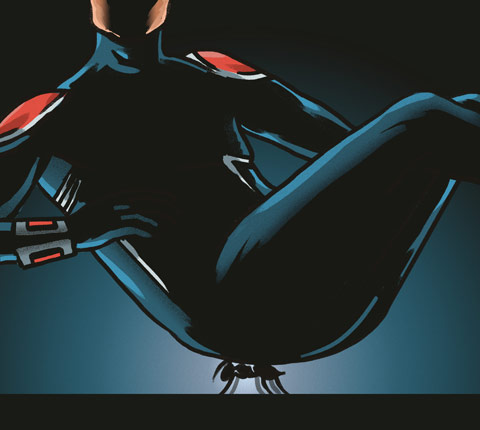Ants have been around the earth since about 140 to 168 million years ago. They lived in the Jurassic period – a time when the world was dominated by the dinosaurs. They’ve kept evolving and adapting to their environment all over the world, and there are now over 12,000 different species of ants.
Generally ants are divided into two roles: the queen and the workers. The queen’s purpose is to lay eggs. She usually remains with the ant colony while the workers are responsible for maintaining and searching for food for the queen and colony.
Ants are omnivorous, so they will eat anything that they can find in nature such as seeds, leaves, and honey. But they will also scavenge dead birds and mice.
Now comes the interesting part: how can such small creatures drag those objects, which are much larger than them, to the ant colony? Science has the answer!
Carlos Castro, assistant professor of mechanical and aerospace engineering at Ohio State University, performed tests on ant joints to determine how similar designs can be applied to mimic similar strength in robots.
Before the experiment, Castro and his research team conservatively estimated that ants may withstand forces up to 1000 times their body weight.
In the first step of the experiment, the researchers anesthetized the specimens, then glued them face-down in a specially designed centrifuge about the size of a compact disc to measure the force needed to disjoin their head from the body. As the disc spun faster, the forces applied to the ants increased until their necks deformed and their heads separated from their bodies at the neck joint.
The researchers found that the ants’ necks ruptured at forces much higher than their original estimate: 3,400 to 5,000 times their weight.
Next, they used micro-computed tomography scans to analyze the neck joint. The researchers found tissue structures were covered in textured microstructures, which they theorized play a role in how the ants manage their strength.
“[The microstructures] might regulate the way that the soft tissue and hard exoskeleton come together, to minimize stress and optimize mechanical function. They might create friction, or brace one moving part against the other,” said Castro.
Another important feature of the ant’s body structure is the gradual transition from soft tissue to hard tissue between the neck joint and head. This gradient provides additional strength by distributing points of stress more evenly.
Another secret to why an ant can carry disproportionately heavy objects is because their bodies are light. Inside their hard exoskeletons, their muscles don’t have to do much work, so they can apply all their strength to lifting objects.
On the other hand, humans carry relatively heavy loads due to our body weight. With our muscles supporting body weight, not much strength is left to lift other objects.


